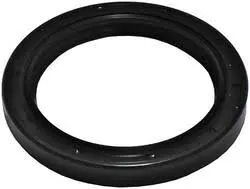9 月 . 29, 2024 09:15 Back to list
Different Types of Oil Seals and Their Applications in Various Industries
Understanding Oil Seal Types A Comprehensive Guide
Oil seals play a crucial role in the functionality and longevity of machinery and engines by preventing the leakage of lubricants and contaminants. With various types of oil seals available, each designed for specific applications, it's essential to understand their characteristics, benefits, and the environments in which they perform best. This article aims to provide a comprehensive overview of different oil seal types, helping you make informed decisions for your machinery needs.
1. What is an Oil Seal?
An oil seal, also known as a lip seal or rotary seal, is a device used to retain lubricating oil in mechanical systems while keeping contaminants out. It consists of a flexible lip that creates a tight seal against a rotating shaft and a rigid outer casing that fits securely into a housing. The design of the oil seal allows it to withstand dynamic and static pressures, making it essential for applications in automotive, industrial, and aerospace sectors.
2. Types of Oil Seals
a. Rotary Oil Seals
Rotary oil seals are commonly used in applications involving rotating shafts, such as those found in engines or gearboxes. These seals are designed with a flexible lip that adapts to the surface of the shaft, creating a reliable barrier against oil leakage. The most common materials for rotary oil seals include elastomers like nitrile rubber and fluorocarbon, each offering different temperature and chemical resistance properties.
b. Dust Seals
Dust seals provide protection against dirt, dust, and other contaminants. While they predominantly focus on preventing external particulates from entering a system, they can also work in conjunction with oil seals to enhance protection. Dust seals are typically made from softer materials that can deform slightly to accommodate the machinery's movement, thus ensuring a tight fit.
oil seal types

Hydraulic seals are specifically designed for hydraulic systems, where high-pressure fluid containment is critical. These seals usually consist of two parts a sealing element and a backup ring. The sealing element maintains pressure, while the backup ring prevents extrusion under high pressure. Hydraulic seals are often made from materials that can withstand harsh environmental conditions, such as polyurethane or PTFE (Polytetrafluoroethylene).
d. Lip Seals
Lip seals are a type of rotary seal that features a lip that contacts the shaft surface at a specific angle. This design enhances sealing effectiveness and minimizes friction during operation. Lip seals are versatile and can be used in various applications, including automotive, aerospace, and industrial machinery.
e. Mechanical Seals
Unlike traditional oil seals, mechanical seals are used in applications where a liquid medium needs to be contained under pressure, such as pumps and compressors. Mechanical seals consist of a pair of faces that provide a tight seal, preventing leakage of fluids. They are engineered to handle high temperatures and pressures, making them suitable for various industrial applications.
3. Choosing the Right Oil Seal
Selecting the appropriate oil seal for your application requires careful consideration of several factors
- Operating Environment Consider factors such as temperature, pressure, and exposure to chemicals when choosing the material for your oil seal. - Shaft Size and Speed Ensure that the oil seal fits the shaft diameter and can handle the rotational speed without excessive wear. - Application Type Different applications may require different sealing solutions. For instance, hydraulic systems will need high-pressure seals, while machinery exposed to dust or debris may benefit from dust seals.
Conclusion
In summary, oil seals are vital components in maintaining the efficiency and integrity of mechanical systems. Understanding the various types of oil seals and their specific applications can aid in selecting the right seal for your needs, ultimately preventing leaks and prolonging equipment life. As technology evolves and the demands of machinery increase, the development of innovative oil seal designs continues to play an integral role in modern engineering. Whether you're involved in automotive repair, industrial maintenance, or aerospace design, knowledge of oil seal types is an invaluable asset.